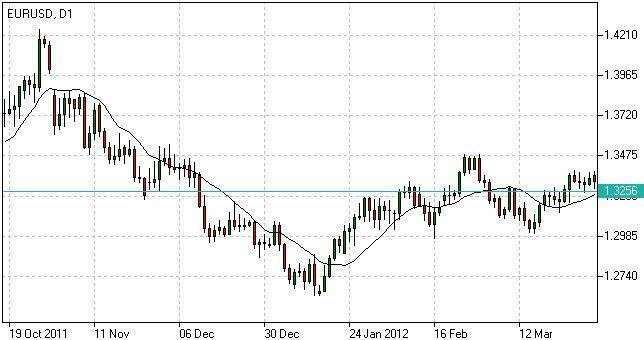
For income above that, they pay an additional Medicare tax of 0.9%. Employers match the 1.45% rate but are not responsible for matching the 0.9% rate. It can be confusing to correctly calculate your FICA taxes and ensure that you’re in compliance with the IRS’s withholding and filing requirements. That’s why many small-business owners take the job off their plate and get payroll software or a professional employer organization (PEO) to do the work for them.

The existence of a fiduciary duty does not prevent the rise of potential conflicts of interest. Workest is here to empower small business with news, information, trends, and community. The nice thing about calculating FICA as part of your payroll processes is that there are very few variables. In this question I really don’t believe anything nefarious was going on.
Employers’ responsibility for FICA payroll taxes
The IRS may ask to review the exemption request, and if they determine that it’s not valid, they will send the employer and the employee a lock-in letter. This document will dictate the employee’s income tax withholding rate, which employers must abide by or their business may be held liable for the back taxes. As you can https://online-accounting.net/ see, the employer’s portion for the social security tax and the regular Medicare tax is the same amount that you’re required to withhold from your employees’ wages. (Different rules apply for employees who receive tips.) There is no employer portion for the 0.9 percent additional Medicare tax on high-earning employees.
- You don’t get a paycheck from your business since you are not an employee.
- In some cases, employers are not withholding, paying, or reporting Social Security and Medicare (“FICA”) tax on employer contributions to section 457(b) plan.
- The total of $80,000 from your wages and your self-employment is less than the Social Security maximum of $117,000, so your Social Security tax is due on all of your income.
- Employer contributions to section 457(b) plans may be subject to Social Security and Medicare (“FICA”) tax.
- The Federal Insurance Contributions Act, or FICA, requires that wage earners contribute a portion of their earnings to fund the Social Security and Medicare programs.
To qualify for a Social Security credit in 2022, you must earn at least $1,510 and pay FICA taxes on that amount. Once you have earned at least 40 credits, you will be eligible to collect Social Security retirement benefits beginning at the age of 62. Do you ever wonder where exactly the money that is deducted from your gross pay goes?
FICA vs. self-employment tax
You just got to see the labor cost calculations they were building your offer off of. That said you can totally get taken advantage of if you don’t know how all the parts interact. They just finagled the numbers to make it work as if there was no tax. The question is whether deducting W2 FICA Employer match is legal from the IRS’ perspective. The Workplace Stack Exchange is a question and answer site for members of the workforce navigating the professional setting. Stack Exchange network consists of 183 Q&A communities including Stack Overflow, the largest, most trusted online community for developers to learn, share their knowledge, and build their careers.

Many people today work both as an employee for someone else and also as a self-employed contractor or freelancer. One common circumstance is to work that second job in the sharing economy, ride-sharing online store accounting with a company like Uber or renting a home through Airbnb. But having these two streams of income means two forms of payroll taxes. Richard, your employee, earns $220,000 from you during 2022.
What Is FICA Tax, and How Much Do You Need to Take Out of an Employee’s Paycheck for It?
That employer contribution that was part of the hourly labor cost was then eliminated, and they could give me more money without changing the number they actually cared about. If an employer did this without your knowledge (i.e., told you they were paying you “$100 less FICA/Medicare” and then paid you only $85.80) that would certainly be illegal. However, if you agreed to this scheme then it would simply be negotiated wages that would be arguably unfair but probably not illegal. Out of that paycheck, $62 goes toward Social Security tax ($1,000 X 0.062). Employer match doesn’t incur FICA tax (social security, medicare) for you at all – either current year or when you withdraw.
- The Self-Employment Contributions Act (SECA) of 1954 requires the self-employed to pay taxes on their net earnings to help fund Social Security and Medicare.
- Now, the tax is divided into Medicare and Social Security tax which is why you will probably see these two items on your paystub rather than just FICA.
- On March 27, 2020, former President Donald Trump signed a $2 trillion coronavirus emergency stimulus package into law.
- Employers are responsible for withholding the 0.9% Additional Medicare Tax on an individual’s wages paid in excess of $200,000 in a calendar year, without regard to filing status.
- But now you will also be taxed on that as income with effectively reduces your income by 7.65 times your marginal rate (say 22%) so that will also increase your taxes by another 1.7% or so.
- The employer FICA match is a requirement for an employer to remit to the government double the amount of social security and Medicare taxes withheld from employee pay.
He didn’t want the financial benefits for their retirement, disability, or death to depend on federal revenue. He feared that politicians would take and use the money for their own purposes. We suggest consulting a tax professional or payroll provider who operates in your state to learn more about state-specific requirements. This implies you’ll pay 6.2 percent of your earnings up to $147,000 in Social Security taxes. Your earnings beyond that threshold will not be taxed for Social Security.
The Self-Employed Contributions Act (SECA)
If you are self-employed, you pay self-employment tax (SECA) based on your net income (profit) from your business. You don’t have to pay this tax as you go since you don’t have to withhold it from your business income. You don’t get a paycheck from your business since you are not an employee. This tax is not calculated until your net business income is determined at tax time. The form used to calculate self-employment tax is Schedule SE.
Payroll Liabilities: What Are Payroll Liabilities? – ADP
Payroll Liabilities: What Are Payroll Liabilities?.
Posted: Thu, 02 Mar 2023 21:27:46 GMT [source]
If an employee earns above the wage base, stop withholding and contributing the 6.2% Social Security portion of FICA tax. This guide is intended to be used as a starting point in analyzing an employer’s payroll obligations and is not a comprehensive resource of requirements. It offers practical information concerning the subject matter and is provided with the understanding that ADP is not rendering legal or tax advice or other professional services. Employers have to withhold taxes — including FICA taxes — from employee paychecks because taxes are a pay-as-you-go arrangement in the United States.
One gig I took the employer had to pay their part of the health insurance regardless of if I used it. That made the W2 rate much less attractive compared to the 1099 rate. I have also been able to negotiate a higher W2 rate because my wife has great insurance so I could guarantee that I would not use theirs.
What Are FICA Taxes? – Forbes Advisor – Forbes
What Are FICA Taxes? – Forbes Advisor.
Posted: Fri, 08 Jul 2022 07:00:00 GMT [source]
Payroll compliance is difficult enough in one state, but as businesses expand into other jurisdictions, the complexity only increases. Some states follow the federal income tax code, others charge a fixed rate or create their own tax brackets, and a few charge no income tax at all. How and when state income taxes are filed and the penalties for noncompliance may also vary from state to state. After each payroll, employers are responsible for submitting FICA taxes—both the employees’ share and the employers’ share. Some employers may submit FICA taxes monthly as opposed to semi-weekly. Your total tax liability for the four quarters ending on June 30 of the previous year will determine if you file monthly or semi-weekly.
